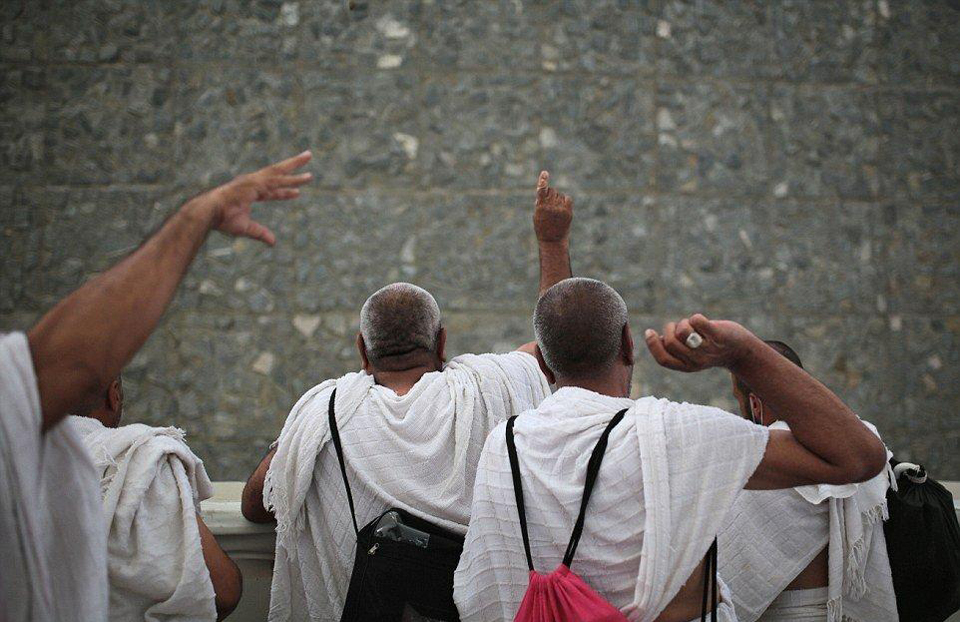
MINA, Saudi Arabia, July 9, 2022 (BSS/AFP) - Muslim pilgrims cast pebbles
in the "stoning of the devil" ritual marking the start of the Eid al-Adha
holiday on Saturday, as this year's expanded hajj pilgrimage was winding down.
From first light, small groups of worshippers made their way across the
valley of Mina, near Mecca in western Saudi Arabia, to throw stones at three
concrete walls representing Satan.
The ritual is an emulation of Abraham's stoning of the devil at the three
spots where it is said Satan tried to dissuade him from obeying God's order to
sacrifice his son, Ishmael.
The stoning ritual has in past years led to deadly stampedes, as millions
of participants converge on a tight space.
The hajj, usually one of the world's largest annual religious gatherings,
is among the five pillars of Islam and must be undertaken by all Muslims with
the means at least once in their lives.
In 2019, some 2.5 million Muslims from around the world took part.
But that figure slumped to only a few thousand in 2020 and 60,000 in 2021,
all of them Saudi citizens or residents, as the kingdom tried to mitigate the
effects of the Covid-19 pandemic.
This year, participation was capped at one million fully vaccinated
worshippers. Authorities said Friday that almost 900,000 were in attendance,
nearly 780,000 of them from abroad.
Hosting the pilgrimage is a matter of prestige and a powerful source of
political legitimacy for Saudi rulers, the custodians of Islam's holiest sites.
Barring overseas pilgrims for the past two years had caused deep
disappointment among Muslims worldwide, who typically save for years to take
part.
The hajj, which costs at least $5,000 per person, and umrah pilgrimages
that occur at other times of the year are a major engine of Saudi Arabia's
tourism sector.
In normal times, they generate about $12 billion annually, keeping the
economy humming in Mecca.
- Virus and heat –
After the stoning ritual, pilgrims return to the Grand Mosque in Mecca to
perform a final "tawaf", or circling of the Kaaba, the cubic structure that is
the focal point of Islam.
Eid al-Adha, the feast of the sacrifice that begins on Saturday, marks the
end of hajj.
Muslims across the world buy livestock for slaughter to commemorate the
willingness of Ibrahim to sacrifice his son to show obedience to Allah.
On Friday, huge crowds of robed Muslim pilgrims prayed on Mount Arafat, the
climax of the annual pilgrimage.
Groups of worshippers, many holding umbrellas against the fierce sun,
recited verses from the Koran on the rocky rise where the Prophet Mohammed is
believed to have given his final sermon.
After sunset, they travelled the short distance to Muzdalifah, where they
slept under the stars before performing the stoning ritual.
- Covid fears –
The large crowds have spurred fears that Covid will spread, especially
after many pilgrims remained maskless, despite claims by Saudi authorities that
masks would be mandatory.
The hajj has been taking place against the backdrop of a resurgence of
cases in the region, with some Gulf countries tightening restrictions to keep
outbreaks in check.
All participants were required to submit proof of vaccination and negative
PCR tests.
Since the start of the pandemic, Saudi Arabia has registered more than
795,000 coronavirus cases, over 9,000 of them fatal. Some 67 million vaccine
doses have been administered in the country of over 34 million people.
The hajj, whose timing is determined by the lunar Islamic calendar, can be
physically draining even in ideal conditions, but worshippers this year faced
an added challenge: scorching sun and temperatures climbing to 44 degrees
Celsius (111 Fahrenheit).